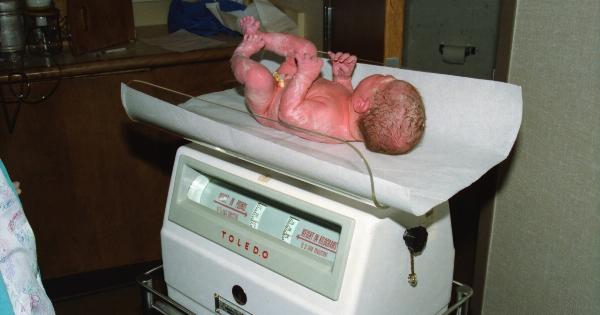For many women, childbirth is an incredible, life-changing experience. While the majority of deliveries occur naturally, there are instances when a Cesarean section, commonly referred to as a C-section, becomes necessary.
A C-section is a surgical procedure that involves the delivery of a baby through an incision in the mother’s abdomen and uterus. If you are preparing for a C-section or simply want to be informed about the procedure, this handbook will provide you with valuable information regarding preparation, complications, and recovery.
1. Preparing for a C-Section
Understanding what to expect and how to prepare for a C-section is essential for a smooth experience. Here are some key steps to take:.
a. Educate Yourself: Learn about the C-section procedure, including the reasons it may be necessary and how it differs from a vaginal delivery.
b. Discuss with Your Healthcare Provider: Have an open conversation with your obstetrician about the reasons for a potential C-section, its risks, and benefits.
c. Create a Birth Plan: Develop a birth plan that includes your preferences for pain management, medical interventions, and post-delivery care.
d. Pack Essential Items: Prepare a hospital bag with clothes, toiletries, nursing supplies, and any required documents.
e. Arrange Support: Coordinate with your partner, family, or friends to ensure you have the necessary support during your hospitalization and recovery.
2. The C-Section Procedure
A Cesarean section is typically performed in an operating room with the following steps:.
a. Anesthesia: You will be given either general anesthesia (puts you to sleep) or regional anesthesia (numbs the lower half of your body).
b. Incision: A horizontal or vertical incision will be made in your abdomen, usually just above the pubic hairline.
c. Uterine Incision: Another incision will be made in your uterus to deliver the baby.
d. Delivery: The baby will be carefully lifted out of the uterus and the umbilical cord will be cut.
e. Placenta Removal: The placenta will be removed from the uterus.
f. Incision Closure: Both the uterine and abdominal incisions will be closed with stitches or staples.
3. Potential Complications
C-Section procedures, like any surgery, carry potential risks and complications. Some possible complications include:.
a. Infection: There is a risk of infection at the incision site or inside the uterus.
b. Blood Loss: Excessive bleeding during or after the C-section may require a blood transfusion.
c. Adverse Reactions: Anesthesia can cause complications such as allergic reactions, breathing difficulties, or excessive drowsiness.
d. Injury: There is a slight possibility of accidental injury to organs like the bladder or bowel during the procedure.
e. Blood Clots: Being immobile during and after the surgery can increase the risk of blood clots.
f. Longer Recovery: Recovery from a C-section generally takes longer compared to a vaginal delivery.
4. Recovering from a C-Section
Proper care and attention during the recovery phase are crucial for a smooth healing process. Here are some tips:.
a. Rest and Limit Activities: Take it easy and avoid strenuous activities for at least the first six weeks.
b. Pain Management: Follow your healthcare provider’s instructions on pain relief medication and managing incision pain.
c. Incision Care: Keep the incision area clean and dry, and follow any specific care instructions provided by your healthcare provider.
d. Support and Help: Accept assistance from loved ones to help with household chores, caring for the baby, and emotional support.
e. Emotional Well-being: It’s normal to experience a range of emotions post-surgery; communicate your feelings with your partner or seek professional help if needed.
f. Breastfeeding: Establish a comfortable breastfeeding position and seek advice from a lactation consultant if necessary.
Conclusion
A Cesarean section can be a safe option for delivering a baby in certain circumstances.
By understanding the preparation required, the procedure itself, potential complications, and necessary post-surgery care, you can feel more confident and prepared for your C-section journey. Always remember to consult with your healthcare provider regarding any specific concerns and to ensure the best possible outcome for you and your baby.




























